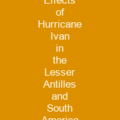The Lesser Antillean macaw or Guadeloupe macaw is a hypothetical extinct species of macaw. It is thought to have been endemic to the LesserAntillean island region of Guadaloupe. Early writers described it as being abundant, but it was becoming rare by 1760. Disease and hunting by humans are believed to have eradicated it shortly afterward. It may have been a close relative of the scarlet macaw and may have lived on Dominica and Martinique.
About Lesser Antillean macaw in brief

Julian Hume proposed in 2012 that the similarity between the Lessers Antilleans macaw and the Cuban macaw indicates that they were close relatives, and that they may have descended from the mainland macaw, and other hypothetical species suggested for Jamaica and Hispaniola. The English paleontologist Julian Hume also suggested that the Lesser antillean macaw and the Cuban macaw formed a superspecies with the Jamaica and Haiti macaw and other hypothetical extinct species of macaws of Jamaica and Hispaniola of the same name. The Lesser Antilleans Macaw was first mentioned by the Spanish historian Gonzalo Fernández de Oviedo y Valdés in 1553, referring to a 1496 account by Ferdinand Columbus. In 1774, the French naturalist Comte de Buffon stated that the Italian explorer Christopher Columbus had found macaws in Guadelupe. The French botanist Jean-Baptiste Du Tertre gave the first detailed descriptions in 1654 and 1667 and illustrated the bird and other animals found in Guaderoupe in 1667. The French clergyman Jean-baptiste Labat also described the bird in 1742. In 1905, Clark gave the species its scientific name, Ara guadeloupensis, based on the contemporary accounts, and he cited a 1765 color plate as possibly depicting this species.
You want to know more about Lesser Antillean macaw?
This page is based on the article Lesser Antillean macaw published in Wikipedia (as of Nov. 07, 2020) and was automatically summarized using artificial intelligence.







